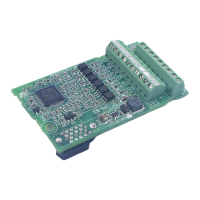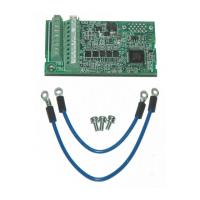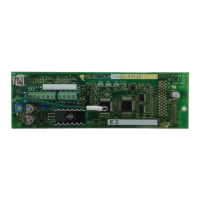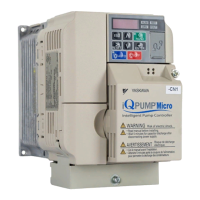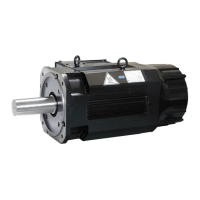No. Name Setting Range Default
L2-11 DC Bus Voltage Setpoint during KEB
150 to 400 Vdc
<1>
[E1-01] × 1.22
<1> Values are specific to 200 V class drives. Double the value for 400 V class drives. Multiply the value by 2.875 for 600 V class drives, but set the
value below 1040 Vdc (overvoltage protection level).
n
L2-29: KEB Method Selection
Selects the way the Kinetic Energy Buffering function operates.
Note:
If a multi-function input is set for Single KEB Ride-Thru 2 (H1-oo = 7A, 7B), the setting of L2-29 is disregarded and the KEB mode
equal to L2-29 = 1 is automatically selected.
No. Name Setting Range Default
L2-29 KEB Method Selection 0 to 3 0
Setting 0: Single Drive KEB Ride-Thru 1
Setting 1: Single Drive KEB Ride-Thru 2
Setting 2: System KEB Ride-Thru 1
Setting 3: System KEB Ride-Thru 2
Refer to KEB Ride-Thru Function on page 241 for detailed explanations.
u
L3: Stall Prevention
The motor may experience excessive slip because it cannot keep up with the frequency reference when the load is too high or
acceleration and deceleration times are too short. If the motor slips during acceleration, it usually causes an overcurrent fault
(oC), drive overload (oL2), or motor overload (oL1). If the motor slips during deceleration, it can cause excessive regenerative
power to flow back into the DC bus capacitors, and eventually cause the drive to fault out from overvoltage (ov). The Stall
Prevention Function prevents the motor from stalling and while allowing the motor to reach the desired speed without requiring
the user to change the acceleration or deceleration time settings. The Stall Prevention function can be set separately for
acceleration, operating at constant speeds, and deceleration.
n
L3-01: Stall Prevention Selection during Acceleration
Stall Prevention during acceleration prevents tripping with overcurrent (oC), motor overload (oL1), or drive overload (oL2)
faults common when accelerating with heavy loads.
L3-01 determines the type of Stall prevention the drive should use during acceleration.
No. Name Setting Range Default
L3-01 Stall Prevention Selection during Acceleration 0 to 2 1
Setting 0: Disabled
No Stall Prevention is provided. If the acceleration time is too short, the drive may not be able to get the motor up to speed
fast enough, causing an overload fault.
Setting 1: Enabled
Enables Stall Prevention during acceleration.
Acceleration is reduced when the output current value exceeds 85% of the level set to parameter L3-02 for a longer than the
time set to L3-27. The acceleration stops when the current exceeds L3-02. Acceleration continues when the current falls below
L3-02 for longer than the time set to L3-27.
The Stall Prevention level is automatically reduced in the constant power range. Refer to L3-03: Stall Prevention Limit during
Acceleration on page 248.
5.8 L: Protection Functions
YASKAWA SIEP YAIP1U 01C AC Drive - P1000 Technical Manual
247
5
Parameter Details

